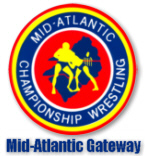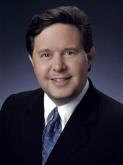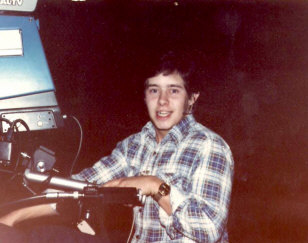|
Wednesdays Behind the Camera in the Studio at WRAL An Insider's Story on Wrestling at WRAL-TV Studios in Raleigh by Rick Armstrong |
||
|
Rick Armstrong is the medical producer and photographer for the "Health Team" reports at WRAL-TV in Raleigh. (WRAL.com Photo) Return to the Mid-Atlantic Gateway
by Dick Bourne Wednesdays in the Video Tape Room at WRAL by Tom Gallagher A Night at the WRAL Studio Tapings by Bruce Mitchell Interview with Les Thatcher
|
Following the great interest and success of our article by video tape operator Tom Gallagher at WRAL-TV, we follow up with another amazing story by Rick Armstrong. Rick has had a long and rewarding career at the station and fondly reflects here on his early days behind the camera (and other duties) on Wednesday nights when Jim Crockett Promotions took over the studios of WRAL for the taping of their two wrestling programs "Mid-Atlantic Championship Wrestling" and "World Wide Wrestling." As you know from visiting our website, we have great interest in the old studio tapings and the special environment they created, and we want to know every little detail of what took place each and every Wednesday afternoon and evening there at WRAL. Rick Armstrong allows us to once again peek behind the curtain. Our special thanks to Rick for sharing his memories of those great days at WRAL, not only providing another course in our on-going education about the Wednesday night wrestling tapings in Raleigh, but also for the his warm memories of some of the great wrestlers who slammed their way around "Studio A." - Dick Bourne, Feb. 2009 In January 1978, I was possibly the youngest person ever hired to work at WRAL TV. I was 18, barely out of high school and starting as a freshman at NC State University. With the help of some connections of a Boy Scout group sponsored by the station, I snagged a part time job on the camera crew. After 4 years as a part-time studio crew employee, I graduated from NC State and started full time as a photographer on the news staff. Later, I became chief photographer and then in 2000, I started as an on-air reporter/photographer. Now, after 31 years at WRAL, I’m the medical producer/photographer working with Dr. Allen Mask on the station’s “Health Team” reports. Back at the start of my career, I knew I might have a hand in working on the newscasts and chat with the anchors and reporters I’d seen on TV at home. It didn’t strike me until one Wednesday afternoon that I’d be rubbing elbows (and hopefully not taking any to the throat from “The Hammer”, Greg Valentine) with wrestlers from Mid Atlantic Championship Wrestling. They’d been recording their shows in our studios for several years. It was a bit intimidating sharing our crew break-room and studios with these massive guys. I admit, I was a closet wrestling fan as a kid in the early 70’s when tag teams like George Becker and Johnny Weaver tussled with Gene and Ole Anderson. Now I was a part of bringing these “good guy-bad guy” battles to TV audiences.
I tried not to shake too much while I gently zoomed out from my shot of Bob Caudle or Rich Landrum as they shared their microphone with Blackjack Mulligan or Ric Flair. I’d always wondered what this “behind the scenes” experience might be like. To my surprise, “bad guys” like the Sheik shared the same studio peacefully with Ricky Steamboat. Boxes of Churches’ Fried Chicken were just outside the studio. In various corners, the Masked Superstar or Baron Von Raschke might be playing backgammon or cards waiting for their turn to rant and rave about their current feud with Wahoo McDaniel or Paul Jones who also sat quietly nearby.
After those 4 hour Wednesday afternoon promo shoots, as we wheeled the camera back into the neighboring studio to get ready for the 6:00 evening newscast, a crew of men set up the fight ring. I could hear the quick shuffling feet dragging heavy equipment into the studio. They quickly laid a steel frame in place and then covered it with several strong wooden boards that would take the brunt of all the body slams. Then they stretched a huge, thick canvas over the square surface. The night before, a crew made sure lights were in place to evenly cover the ring area as well as the spot where the announcers would stand and do interviews. After the ring was in place, we had to drag the two sets of wooden bleachers out for the fans who were sure to fill every square inch. As news anchors Charlie Gaddy and Bobbie Battista left the news set at 6:30, me and others on the night crew – including guys like David Gill, Frank Jones, Baxter Motley and Richard DeZonie – wheeled the 3 cameras into position for two one hour shows. We had a quick 45 minutes to take a dinner break before the madness began. I’ll never forget walking through our back parking lot one night, just as darkness fell around 6:45. A cab pulled up just behind where we park our news vans. As the back door cracked open, the dome light inside revealed a spindly cab driver who must have been shaking like a leaf. Packed into the back seat with his head bumped up against the ceiling was a head the size of a large pumpkin and a body to match. It was Andre the Giant thumbing through his wallet to pay the driver. I hope he left the poor guy a good tip. As the time drew near, fans who’d lined up outside the front door were allowed in to fill up the bleachers. To viewers at home, the only difference in Mid Atlantic Championship Wrestling and World Wide Wrestling was the announcers – Bob Caudle and Rich Landrum respectively – and the logos behind them. We had a large “flat” on wheels – just a wall with one show’s logo on one side and the other on the flip side. It made for a quick turn around as we transitioned from one show to the next.
Director Robert Parnell was often the voice on headsets calling out commands. Bob Gubar was among the audio board operators mixing in theme music and potting up the microphones on the announcers. My last year on the crew, I wasn’t running camera, but I was assigned a job that I took great delight in. I was the slo-mo/replay guy. It was a far cry from the high tech replay gadgets of today. This device was a video disc that held about 10 to 20 seconds of video. If Ric Flair could tie up Paul Jones in a “Figure 4 Leg-lock”, or if Rufus “Freight Train” Jones got a head full of steam, bouncing off the ropes to run over the Sheik, I’d stop the disc and cue it up for the inevitable replay. I’d wait for the cue and then let the action roll in slo-mo. Then I’d freeze it just as Blackjack Mulligan’s claw hold clamped down on the head of Brute Bernard. On every one of the studio shows, all the matches fit perfectly inside the broadcast limit. Even if a last minute match had to be added with just 4 minutes left, the wrestlers dutifully ended the match with a pin just in time for the credits.
Wrestling nights were always high drama
at the station. As I occasionally lead people on tours through our
studios, I always take them through studio A and tell stories about
those wild and crazy nights that ended in 1983. Most of the adults
in those tour groups know exactly what I’m talking about. The
younger kids, familiar with the WWE, are often amazed to hear that
this studio was where a big part of that wrestling tradition got its
start. I’ve done many things in my career at WRAL TV, covered
amazing stories and traveled far and wide – but nothing grabs the
attention of friends and strangers more than sharing my memories of
those colorful days of Mid Atlantic Championship Wrestling. - Rick Armstrong February 24, 2009
The credits roll at the end of another edition of Mid-Atlantic Championship Wrestling.
Copyright © 2009 Mid-Atlantic Gateway Published 2/25/09
|



 My
first Wednesday afternoon at the station, I was running camera as we
recorded wrestling promos. Gene Anderson usually stood near the
camera. I never saw his brother Ole from their tag team days. Gene
had retired from the ring. His new role was overseeing the promo
shoots where wrestlers screamed into the camera to attract fans to
their next contests in cities like Raleigh, Charlotte, Atlanta or
Norfolk. All I could think about was how Gene bullied victims in the
ring. But at the time, he was a kind, gentle giant who was all
business.
My
first Wednesday afternoon at the station, I was running camera as we
recorded wrestling promos. Gene Anderson usually stood near the
camera. I never saw his brother Ole from their tag team days. Gene
had retired from the ring. His new role was overseeing the promo
shoots where wrestlers screamed into the camera to attract fans to
their next contests in cities like Raleigh, Charlotte, Atlanta or
Norfolk. All I could think about was how Gene bullied victims in the
ring. But at the time, he was a kind, gentle giant who was all
business. We
had a large wooden riser with a separate ramp that allowed us to
wheel Camera 2 up about 4 feet off the studio floor. When I was
assigned camera, I usually ran Camera 2. As a rookie, it was a bit
easier to stay on the high wide shot. I tried not to miss any hand
slap on tag team matches. The other cameras zoomed in for the tight
shots of the wrestlers faces as they tried to struggle out of an
inescapable hold. Another camera would catch all the action as Jimmy
“The Super Fly” Snuka climbed the corner turn buckles to the top and
turned around to drop his body, full force, onto some poor
sacrificial newcomer. Perhaps, if someone like Ernie Ladd was the
one lying on the mat, he’d roll away from Snuka at the last second
to keep the match alive.
We
had a large wooden riser with a separate ramp that allowed us to
wheel Camera 2 up about 4 feet off the studio floor. When I was
assigned camera, I usually ran Camera 2. As a rookie, it was a bit
easier to stay on the high wide shot. I tried not to miss any hand
slap on tag team matches. The other cameras zoomed in for the tight
shots of the wrestlers faces as they tried to struggle out of an
inescapable hold. Another camera would catch all the action as Jimmy
“The Super Fly” Snuka climbed the corner turn buckles to the top and
turned around to drop his body, full force, onto some poor
sacrificial newcomer. Perhaps, if someone like Ernie Ladd was the
one lying on the mat, he’d roll away from Snuka at the last second
to keep the match alive.